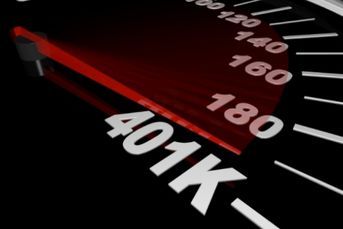Alcoa now seen as tin-plated bellwether
Once seen as an accurate barometer of the state of corporate America, Alcoa has lost its relevance to stock market watchers.
Alcoa Inc. (AA), the first Dow Jones Industrial Average member to report results each quarter, is losing its accuracy as a bellwether for the U.S. stock market.
The Standard & Poor’s 500 Index has usually followed Alcoa (AA)’s lead since 2002, rising 2.5 percent in quarters when the aluminum producer beat the market after earnings, less when it didn’t. That relationship has broken down since 2011, when the S&P 500 posted even bigger gains, about 3 percent, when Alcoa’s results hurt its stock, according to data compiled by Bloomberg.
Overtaken in size and market clout by diversified commodities companies such as BHP Billiton Ltd. (BHP) and Glencore International Plc, Alcoa has struggled to make a profit with aluminum prices sagging as production outpaces the metal’s use. Investors are looking beyond the New York-based producer, which announces results after the close of trading today, to companies such as International Business Machines Corp., which reports in 10 days, according to Bespoke Investment Group.
“We don’t consider it much of a bellwether,” said Edward Dewees, who helps oversee about 3 million Alcoa shares among the $2.7 billion managed by New York-based Douglas C. Lane & Associates. “As far as did Alcoa beat or meet earnings, that’s a meaningless headline. Any investor who’s going to make a decision about other companies’ earnings based on Alcoa’s headline earnings, that’s silly.”
Expected Profit
Alcoa is expected to report a 8-cent per share profit today, according to the average of 18 analysts’ estimates compiled by Bloomberg, two cents less than the results the company delivered in the first quarters of 2010 and 2012.
Monica Orbe, a spokeswoman for Alcoa, declined to comment on the company’s earnings or its position in the market.
Since 2002, the S&P 500 gained an average of 2.5 percent in the 90 days following Alcoa’s earnings in instances where Alcoa outperformed the market on the day after its results, according to data compiled by Bloomberg. When Alcoa underperformed, the benchmark gauge for U.S. equities only added 0.5 percent in the next 90 days, the data show.
In the seven quarters during the past two years in which Alcoa has underperformed following its earnings results, the S&P 500 has still climbed an average of 3 percent in the following 90 days, including one rally of as much as 8 percent, the data show. The S&P 500 fell 0.5 percent the one time the company outperformed.
Since 1959
Alcoa, which rose 1.8 percent to $8.39 at the close in New York today, was added to the Dow Jones average in 1959. The company is now the gauge’s least-influential member with a price-weighting of 0.4 percent, compared with 11 percent for IBM and 6.4 percent for Chevron Corp.
Alcoa, the world’s most valuable materials company in 2002,
no longer ranks in the top 89. Its market capitalization has slumped 74 percent to about $9 billion, according to data compiled by Bloomberg.
The decline has threatened the company’s status as a bellwether, a term which originally referred to a bell-wearing sheep that leads the flock and indicates to the shepherd where to find his animals as they graze.
When Alcoa’s shares fall after it reports — which happened 20 times in the past eight years — the S&P 500 had had negative returns through the two months of earnings season 50 percent of the time, according to Ryan Detrick, a Cincinnati-based analyst at Shaeffer’s Investment Research. An increase in Alcoa shares after earnings was correlated with positive returns 69 percent of the time.
Coin Flip
“With this upcoming earnings season we wouldn’t put nearly the same confidence that we would just five or six years ago,” Detrick said. The company’s results now predict the direction of the market about as well as a “coin flip.”
“A $9 billion company is clearly not as significant as one of the top 30 blue-chip names,” Detrick said.
The number of large institutional shareholders owning Alcoa has dropped by 47 percent in the past 10 years, according to data compiled by Bloomberg. In the first quarter of 2003, 390 investment managers controlling $100 million or more said they held Alcoa shares. In March, only 208 such firms reported owning Alcoa shares.
Alcoa’s debt may be downgraded to junk level, Moody’s Investors Services said Dec. 18.
New Indicator
IBM is a better indicator because its products and services are more ubiquitous even than the metal used in beer cans, airplane wings and some pick-up trucks, Paul Hickey, co-founder of Harrison, New York-based research firm Bespoke, said in an interview.
“If IBM trades up on the day after earnings, the rest of earnings season will be positive 75 percent of the time,” Hickey said. “Their services unit is in every Fortune 500 company and practically every government of the world.”
Mining companies such as BHP and Rio Tinto Group have grown through acquisitions and building new capacity for several commodities, while Alcoa focused resolutely on aluminum. Russian and Chinese competitors have taken market share, leaving the company that invented modern aluminum processing as the world’s third-largest producer.
“The fundamentals for metals and mining equities have certainly delinked from other sectors,” Andrew Cosgrove, an analyst at Bloomberg Industries in Princeton, New Jersey, said in an interview. “That’s principally due to the fact that the aluminum markets are in oversupply. That’s what’s been driving the disconnect between metals and mining and the market as a whole.”
Global Output
Global aluminum output exceeded demand by 906,440 tons last year, according to data compiled by Bloomberg. That surplus has kept prices from rising and contributed to warehouses accumulating about 7.2 million tons of inventories, about eight weeks’ use, according to March 14 estimates by Barclays Plc.
A price-taker for the unprocessed metal that accounts for the largest share of the company’s revenue — 32 percent in 2012 — Alcoa’s profitability has suffered even as demand has improved with a recovering U.S. economy.
Alcoa Chief Executive Officer Klaus Kleinfeld now expects China, the country that churns out the most aluminum, to supply 350,000 tons more than it will consume, causing a surplus this year.
Facing Surplus
Kleinfeld’s goals include completing work on a $11 billion mining, smelting and rolling complex in Saudi Arabia, which will be among the world’s cheapest to operate. He is trying to expand the profit margin in the company’s businesses that make engineered products such as fasteners used on aircraft and the blades that turn jet-engine and electricity-generating turbines.
Alcoa grew at the beginning of the 20th century to dominate U.S. industry as an integrated monopolist alongside John D. Rockefeller’s Standard Oil and Andrew Carnegie’s U.S. Steel Corporation, according to George David Smith, a professor of business history at New York University’s Stern School of Business who has consulted for Alcoa.
Protected by patents on the industrial process that founder Martin C. Hall discovered independently and concurrently with French chemist Paul Heroult, Alcoa operated as a U.S. monopoly through 1940.
By the time Paul O’Neill came to the Aluminum Corporation of America as CEO in 1987, the company faced competition from peers trying to outgrow it in the U.S. and Europe.
Aluminum Focus
When O’Neill departed in 1999, he had made new bets that Alcoa could profit from focusing purely on aluminum rather than diversifying into other materials such as copper or iron ore as other global mining companies did. He bought Spain’s state-owned aluminum producer, Inespal SA, and Alcoa’s biggest U.S. competitor, Reynolds Metals Co.
His successor, Alain Belda, spent a decade specializing in aluminum products and cutting costs. In 2000, he paid $2.9 billion for Salt Lake City-based Cordant Technologies Inc., a maker of engine parts and fasteners for aircraft, expanding the business that is now Alcoa’s most profitable.
As these transactions and an oversupply of aluminum reduced the company’s power as a market indicator, Bespoke’s Hickey said Alcoa has “become less and less relevant.”
Alcoa’s earnings aren’t the bellwether they once were, Hickey said. “It’s a serial underperformer.”
–Bloomberg News–
Learn more about reprints and licensing for this article.






